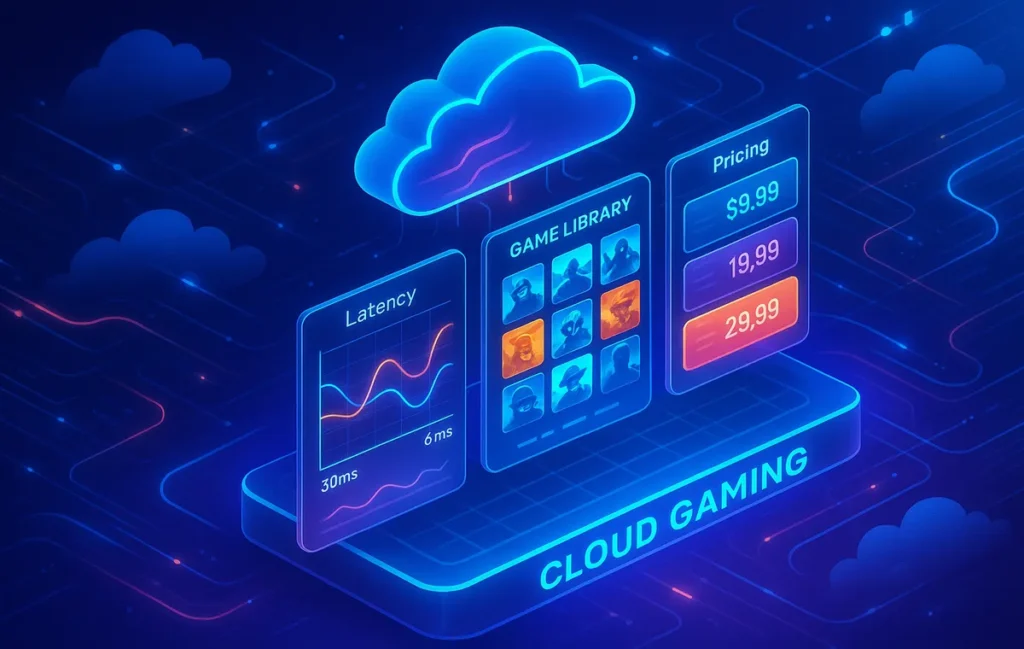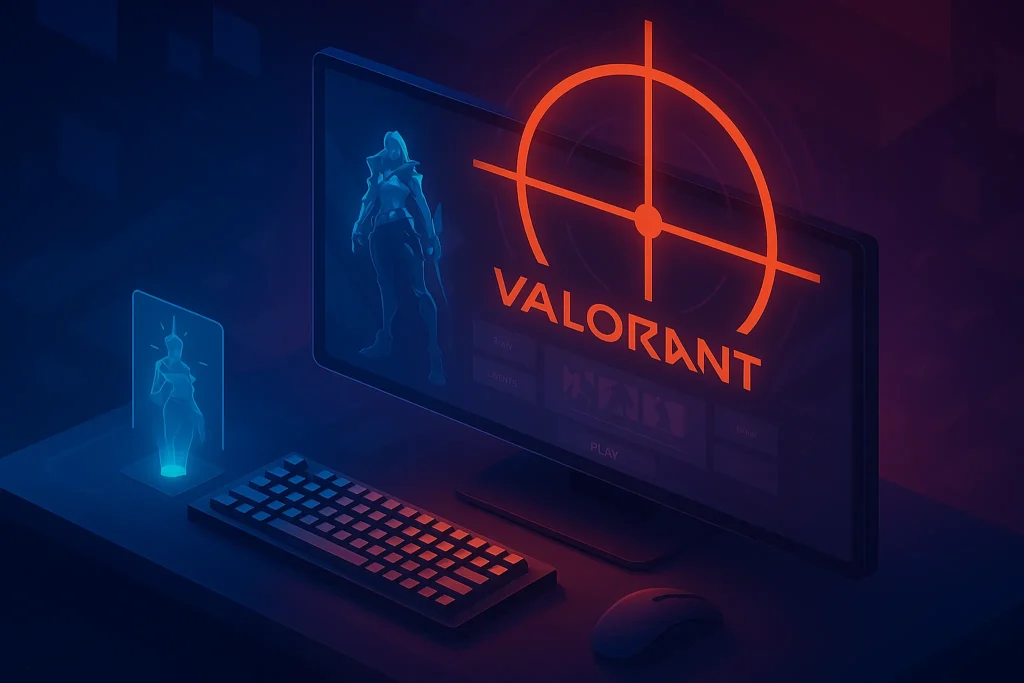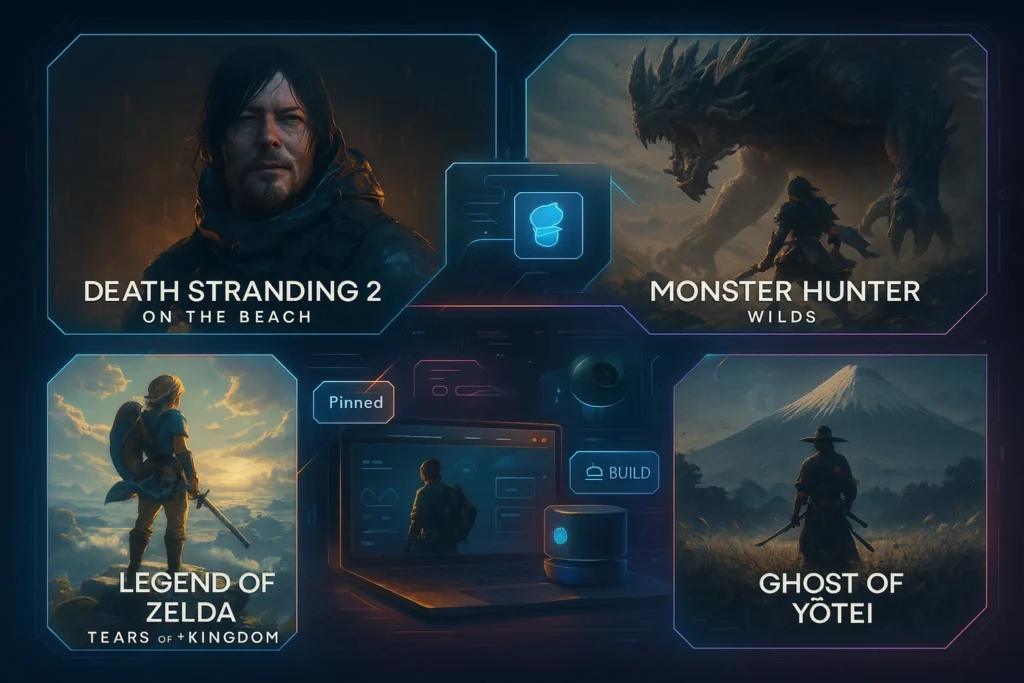🎮 The State of Cloud Gaming in 2025
Cloud gaming has evolved from an experimental curiosity into a mainstream option. In 2025, gamers no longer ask if cloud gaming works—they ask how well it stacks up against consoles and PCs. With faster broadband, edge servers, and AI-powered compression, services promise console-quality play without the hardware. But gamers care about three things: latency, libraries, and pricing.
At NerdChips, we’ve tracked this rise closely. Latency remains the make-or-break factor, libraries define long-term value, and pricing determines whether the model is sustainable. These three pillars set apart winners from pretenders. And with the competition heating up between Xbox Cloud Gaming, GeForce NOW, PlayStation Plus Premium, and emerging platforms, 2025 is the year of meaningful comparison.
💡 Nerd Tip: Don’t fall for glossy trailers. Evaluate your cloud service by how it handles your connection, your favorite titles, and your budget.
⚡ Latency: The Make-or-Break Factor
Latency—the delay between your input and on-screen response—remains the central concern. Improvements in server distribution and 5G rollout have cut average latency by 20–30% since 2022, but differences between services remain stark.
Benchmarks show GeForce NOW Ultimate delivering 25–30ms latency in optimal regions, thanks to its RTX 4080-powered servers. Xbox Cloud Gaming averages 35–40ms, still playable but noticeable in competitive shooters. PlayStation Plus Premium trails slightly, especially outside Sony’s strongest markets, with reports of 45ms+ in rural areas.
Gamers on X often share mixed experiences. One player noted: “GeForce NOW feels like cheating on a 144Hz monitor. Xbox Cloud is fine for Forza, but I wouldn’t touch Halo multiplayer.” These sentiments reflect reality: latency isn’t universal—it depends on proximity to servers, ISP stability, and device optimization.
For those struggling with lag, strategies like optimizing home networks or using Best Gaming VPNs: Lower Ping, Safer Servers can sometimes shave precious milliseconds. As we covered in How to Reduce Lag in Online Multiplayer Games, small tweaks can make the difference between frustration and flow.
📚 Game Libraries: Content is King
Even perfect latency won’t matter if your favorite titles aren’t available. This is where services diverge significantly.
Xbox Cloud Gaming integrates with Game Pass Ultimate, offering over 400 games across genres, including day-one first-party titles. This makes it the strongest for players who want breadth and freshness.
GeForce NOW takes a different approach—it doesn’t include games, but lets you stream titles you already own on Steam, Epic, and Ubisoft Connect. This model appeals to PC gamers with established libraries but can feel fragmented to newcomers.
PlayStation Plus Premium offers a curated set of classic and modern PlayStation titles, but the absence of consistent day-one releases remains its weak spot. For players seeking nostalgia, though, it’s the only way to stream classics like Metal Gear Solid 3 or older Final Fantasy titles.
User perception reflects this. A Redditor wrote: “Game Pass makes me feel spoiled—too many options. GeForce NOW makes me feel in control—I play what I already own. PlayStation makes me nostalgic but sometimes frustrated.”
💡 Nerd Tip: Match the service to your gaming identity. If you’re a discoverer, Xbox wins. If you’re an owner, GeForce NOW rules. If you’re a nostalgist, PlayStation delivers.
💸 Pricing: Subscription Models in 2025
Pricing models vary widely, and in 2025, services are experimenting with tiers and bundles.
-
Xbox Cloud Gaming (Game Pass Ultimate): $16.99/month, includes console/PC library and cloud access.
-
GeForce NOW: Free tier with wait times, Priority at $9.99/month, Ultimate at $19.99/month for RTX 4080 power.
-
PlayStation Plus Premium: $17.99/month, bundles streaming with PlayStation classics and online multiplayer.
A quick calculation shows Xbox as the best value for breadth, GeForce NOW for performance enthusiasts, and PlayStation for brand loyalists. But hidden costs matter too. If you don’t already own PC games, GeForce NOW’s value drops quickly. Conversely, if you’re a collector who hates subscription churn, Xbox’s all-you-can-play model may feel overwhelming.
💡 Nerd Tip: Add up not just monthly fees, but your true cost: Are you paying for games you’ll never play, or leveraging every dollar?
📊 Face-Off Snapshot: Latency, Libraries, Pricing
| Service | Avg Latency | Library Strength | Pricing | Best Fit |
|---|---|---|---|---|
| Xbox Cloud Gaming | 35–40ms | 400+ titles, day-one releases | $16.99/month | Explorers & value seekers |
| GeForce NOW Ultimate | 25–30ms | Stream your owned PC games | $19.99/month | PC purists & performance players |
| PlayStation Plus Premium | 40–50ms | PS classics + curated modern titles | $17.99/month | Nostalgists & Sony loyalists |
This table simplifies a complex market. Each service wins on one axis: Xbox on variety, GeForce NOW on responsiveness, PlayStation on heritage.
⚡ Ready to Upgrade Your Cloud Gaming Experience?
Explore top-tier services like GeForce NOW Ultimate or Xbox Cloud Gaming. Get sharper visuals, faster latency, and libraries that match your style.
🎧 The Experience Layer: Devices and Ecosystem
Cloud gaming isn’t just software—it’s the ecosystem around it. The best services feel seamless only if paired with the right devices and accessories.
Handhelds like the Steam Deck OLED (see our Steam Deck OLED Review) and Logitech G Cloud are now optimized for cloud gaming, with OLED displays making compressed visuals look sharper. Pairing with audio gear also matters. Latency-sensitive headphones like the Sony WH-1000XM6 Review or even Best Budget Noise-Cancelling Headphones Under $150 can reduce distractions and elevate immersion.
Gamers often underestimate how peripherals impact experience. A 30ms cloud session feels smoother with low-latency audio and a responsive controller. Ecosystem choices can amplify or sabotage the core cloud service.
📂 Case Studies: Competitive Gamer vs. Casual Player
The perception of cloud gaming in 2025 depends heavily on the type of gamer. Competitive players, especially those in eSports, still treat latency as sacred. A professional Apex Legends player tested GeForce NOW Ultimate and praised its responsiveness, but admitted that even at 25–30ms latency, the subtle delay was enough to disrupt high-level ranked play. For them, local hardware remains non-negotiable. One eSports coach wrote on X: “Cloud is 90% there, but that 10% is the difference between winning and losing.”
Casual gamers tell a different story. A university student in Spain used Xbox Cloud Gaming to play RPGs like Starfield on a mid-range laptop. With stable 100 Mbps internet, they reported no noticeable lag and enjoyed the ability to switch between laptop and phone instantly. For non-competitive titles, convenience outweighed minor performance dips. They summarized it simply: “Cloud gaming isn’t perfect, but it means I don’t need a $2,000 rig. That’s a win.”
The contrast shows that cloud gaming’s promise is contextual. For casuals, it’s liberation from hardware. For competitors, it’s still a backup, not a primary platform.
🌍 Regional Performance & ISP Factor
Cloud gaming isn’t experienced equally worldwide. Infrastructure and ISP partnerships make or break the promise. In Western Europe, widespread fiber and 5G have made services like GeForce NOW and Xbox Cloud Gaming smooth, often under 30ms latency. In contrast, parts of South America and Southeast Asia still report 50–80ms+, making fast-paced games frustrating.
A gamer in Brazil shared: “I love Game Pass, but during peak hours, input lag makes FIFA unplayable. Single-player is fine, but I wouldn’t trust it for ranked.” This highlights the impact of ISP load management and server distribution.
Providers are responding by investing in regional data centers. Microsoft expanded Azure nodes in Eastern Europe and India in 2025, promising better reach. Nvidia is experimenting with edge servers closer to metropolitan hubs. But until infrastructure is universal, cloud gaming’s experience will remain uneven.
💡 Nerd Tip: Always test trial tiers in your region before committing. Marketing promises mean little if your local ISP throttles traffic.
📱 Device Experience: Mobile vs. PC vs. Handhelds
The device layer is just as critical as the platform. Playing on a high-refresh gaming monitor isn’t the same as on a handheld or mobile.
On desktop PCs, GeForce NOW shines, particularly with 120Hz and 4K streaming modes. Competitive gamers say it feels closest to native hardware when paired with wired Ethernet and low-latency headphones like the Sony WH-1000XM6 Review.
On mobile, 5G adoption has unlocked real portability. Xbox Cloud Gaming sessions now boot up in seconds, and controllers like the Backbone One turn phones into pocket consoles. However, mobile data caps remain a risk: a single hour of 1080p cloud play can burn through 8–10GB of data.
On handhelds, the Steam Deck OLED (see our Steam Deck OLED Review) and ASUS ROG Ally are proving to be excellent cloud-first devices. Their OLED panels hide compression artifacts, making visuals sharper than on many laptops. For players who don’t want to juggle heavy gaming rigs, these handhelds are the bridge between local and cloud.
The lesson? Cloud gaming feels dramatically different depending on your screen and network setup. The same platform can feel revolutionary on one device and mediocre on another.
⚠️ Long-Term Concerns: Beyond the Hype
Cloud gaming in 2025 is strong, but several unresolved issues linger.
Ownership of games is the elephant in the room. Unlike physical discs or digital downloads, streamed titles can disappear overnight if licensing deals expire. Gamers experienced this in 2024 when several popular titles vanished from PlayStation Premium without notice.
Data usage and costs are another concern. While broadband is improving, ISPs in some regions still enforce strict data caps. A household with multiple cloud gamers could burn through terabytes monthly, leading to unexpected bills.
There’s also the issue of platform exclusivity. Microsoft, Sony, and Nvidia all negotiate to keep certain titles tied to their ecosystems. This could recreate the same “exclusive wars” seen in consoles, except now without even the guarantee of offline access.
💡 Nerd Tip: Treat cloud gaming subscriptions like Netflix—amazing access while you have it, but not a permanent library. Always balance cloud with a few owned titles you can rely on.
🔮 The Future Outlook: 2026 and Beyond
Looking ahead, cloud gaming may soon merge with other cutting-edge tech. Nvidia is already experimenting with DLSS 4 Cloud, upscaling streamed visuals in real time for sharper output with less bandwidth. Early tests show up to 40% reduction in data transfer needs, making 4K cloud gaming more accessible to average users.
We’re also seeing early signs of VR and AR integration. Companies are testing cloud-rendered VR sessions where the heavy lifting happens in the cloud, while lightweight headsets just stream the result. If viable, this could make high-end VR experiences affordable without $2,000 PCs.
Finally, expect cross-platform continuity. By 2026, we may see universal accounts that carry progress across cloud, console, and PC without friction. This would eliminate one of today’s pain points: switching platforms often means juggling saves and subscriptions.
At NerdChips, we see the trajectory clearly: cloud gaming won’t fully replace hardware by 2026, but it will become an essential complement, embedded in every gamer’s ecosystem.
📬 Want More Smart AI Tips Like This?
Join our free newsletter and get weekly insights on AI tools, gaming tech, and future platforms—delivered by NerdChips straight to your inbox. No fluff. Just battle-tested content for gamers and creators.
🔐 100% privacy. No noise. Only value.
🧠 Nerd Verdict
Cloud gaming in 2025 is no longer a beta experiment—it’s a legitimate pillar of gaming. Latency is manageable, libraries are competitive, and pricing is on par with traditional subscriptions. But the verdict depends on what you value most. Xbox Cloud Gaming is unbeatable for variety and day-one access. GeForce NOW Ultimate dominates on responsiveness and fidelity. PlayStation Plus Premium offers nostalgia and exclusives no one else can. At NerdChips, our take is clear: cloud gaming is ready for primetime, but the right service depends on whether you’re chasing performance, breadth, or brand loyalty.
❓ Nerds Ask, We Answer
💬 Would You Bite?
Would you drop your console or PC for a full-time cloud gaming setup in 2025, or do you still see it as a complement to traditional gaming?
Crafted by NerdChips for gamers and creators who want their playtime to be limitless.



